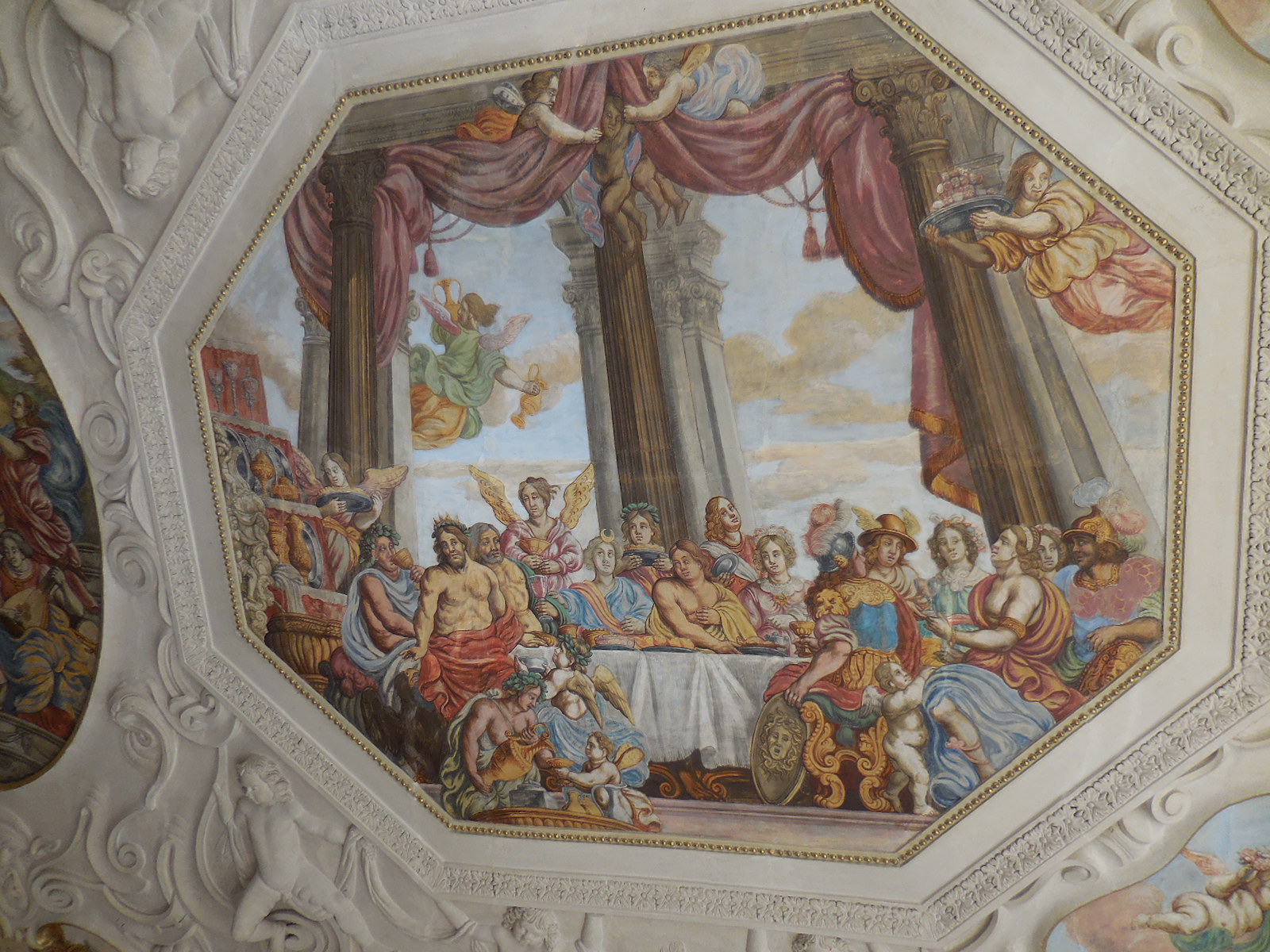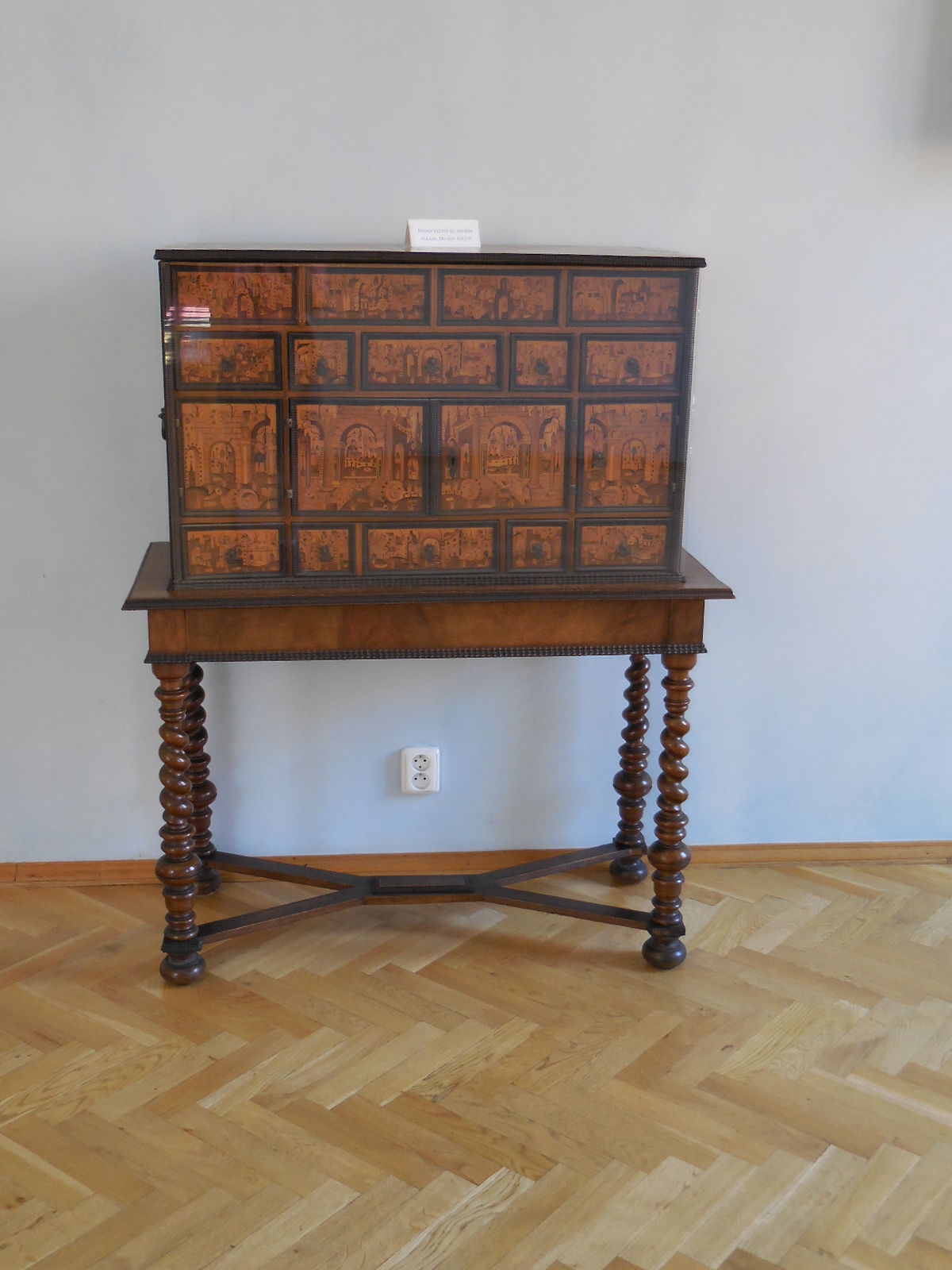

No visit to Prague Castle is complete without a stop at the Lobkowicz Museum, which traces the prestigious history of the Lobkowicz family and shows how the clan influenced Czech history. Located in Baroque Lobkowicz Palace, the museum displays a wide range of artifacts from paintings and ceiling frescoes to musical instruments and weaponry.

Lobkowicz Palace was built in the 16th century by Jaroslav from Pernstyn. When his brother Vratislav was in charge of the property, he married the Spanish Maria Maximiliana Manrique de Lara y Mendoza. She brought the famous Infant Jesus of Prague, said to perform miracles, to the Czech lands from Spain. The Lobkowicz family gained control of the palace when Polyxena married Zdenek Vojtech, the first Prince of Lobkowicz. The clan has owned the palace since then with the exception of 63 years, when the Nazis and Communists possessed it.
The Lobkowicz princes played a role in the Defenestration of Prague, and a painting in the museum depicts this event. Protestant nobles revolted against the Catholics by hurling two Catholic ministers and a secretary out of a window. Soon the Thirty Years’ war commenced. The three were saved by falling on a heap of dung. Two of them spent some time in Lobkowicz Palace. According to legend, Polyxana Lobkowicz hid the two under her skirt.
The gripping story of Max Lobkowicz, the current owner’s grandfather, sounds like the plot of a thrilling film. After World War I, Max supported the democratic First Republic of Czechoslovakia. He allowed President Tomas Garrigue Masaryk to use several rooms in his palace. His devotion to the First Republic did not wane during World War II, either. While involved in anti-Nazi activities, he spent World War II in London as ambassador of the Czech government in exile. The Germans loathed Max not only for his anti-Nazi stance but also because his wife was British.
After the Communists engineered a coup and gained control of the country in 1948, Max couldn’t find a way to leave Czechoslovakia. His wife Gillian had taken shelter in London. The two concocted a ruse so that Max could flee. Gillian wrote to him that she was very ill, though it was not true. Max was allowed to make a brief visit to London. Leaving 13 castles behind, he had only his coat and the clothes he was wearing. His escape was successful. Max and Gillian’s 10-year old son was ushered to safety in the USA.
Retrieving the property after the Velvet Revolution was no piece of cake for William Lobkowicz, Max’s grandson. He and his family returned to live Czechoslovakia during 1990. The restitution process was not easy. They had less than a year to find all the items that belonged to them. Altogether, it took 12 years to get back their property.
Each family portrait in the museum tells a unique story. These tales came alive as I studied each painting. Vratislav Pernstejn, an ancestor from the 16th century, had been honored as the first Czech recipient of the Order of the Golden Fleece when he was only 25 years old. King Philip II of Spain’s portrait made an appearance, too. This Lobkowicz ancestor ruled for 40 years, and his kingdom was truly vast, including Central America, the Caribbean and territory of what is now the USA. He was known for many accomplishments. For instance, he was responsible for the first trans-Pacific trade route between America and Asia.
Seeing the portraits made me yearn to trace my own Czech and Slovak ancestry, but I had too little information. My decision to move from the USA to Prague after college was triggered by a yearning to find my true self-identity in the land of my ancestors. In the USA, I had lived with a sense of emptiness about my family’s past, one that was filled when I moved to Prague, where I had immediately felt at home.
The artwork in the museum is top-notch, with paintings by Lucas Cranach the Elder, Pieter Bruegel the Elder and Antonio Canaletto as the highlights. Lucas Cranach the Elder’s work captivated me with his portrayal of Mary and Jesus with Saint Catherine and Saint Barbara. He created the painting in 1520. Bruegel’s painting Haymaking represents June and July, part of a six-panel series of the months of the year. For the first time landscape became the primary subject of a painting. Previously, the landscape had been in the background while religious figures made up the foreground. Canaletto’s two gems showcase a distinctive atmosphere of London and the Thames River. His City of London from the River Thames with St. Paul’s Cathedral on Lord Mayor’s Day hails from 1748 and The River Thames Looking Toward Westminster from Lambeth was created in 1746-47.

Do not overlook the remarkable paintings by Carl Robert Croll, who rendered over 50 paintings for Ferdinand Joseph Lobkowicz in the 1840s. Some of his works feature Jezeri Castle, Roudnice Chateau and Nelahozeves Chateau, all of which the Lobkowiczs had owned at one time or currently possessed.
Musical instruments and musical scores also punctuate the family collection. The original score of Part III of the Messiah by Handel as arranged by Mozart is one of many precious music-related items. Original scores by Beethoven and Mozart are also on display. Franz Joseph Maximilian Lobkowicz was a patron of Beethoven. The celebrated composer even dedicated three of his symphonies to his patron. Many violins and other musical instruments round out the exhibit.
The Dining Room amazes with its allegorical ceiling frescoes. An armory is also on the premises with many impressive weapons and knights’ armor. Engravings of ancient and modern Rome adorn the Firanesi Room. The Oriental Room shows off Chinese embroidered silk panels from the 18th century. Majolica and Delft porcelain add elegance to the museum as does a superb Meissen collection. The masterly carved woodwork in the Rococo Room is another delight. Rooms with bird and dog themes also captivate.

Be sure to use the audio guide during your visit. There is also a concert hall and café. Nelahozeves Chateau, a Lobkowicz property that is remarkable for its artwork, furnishings and architecture, is located about an hour from Prague. It is definitely worth visiting, too.

Open daily 10 am to 6 pm
Concerts every weekend at 1 pm
* * *

Tracy A. Burns is a writer who has lived in Prague for more than 25 years. She has written about travel for her blog Tracy’s Travels at www.taburns25.com, Private Prague Guide Prague Blog and The Washington Post, among others. She has also published theatre, film and art reviews. Her book reviews and essays on Czech and Slovak literature have appeared in Kosmas, a Czechoslovak academic journal. Her articles in Czech and Slovak have appeared in numerous publications, such as Listy, Literární noviny and Reflex.